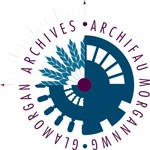The 31st May 1916 was an unusual day for the pupils of Queens Road School, Merthyr Tydfil. Lessons were suspended for the afternoon and the entire school attended the Theatre Royal for a showing of a film Britain Prepared (EMT 19/6, p64).
This was no ordinary film. It was the first of a series of films produced by the Government during the war to promote the strength of the British army and navy and bolster morale. We can only guess what the pupils made of the film with its clips of soldiers training for war and demonstrations of the fire power of the Royal Navy. However, by 1916 pupils were already familiar with the importance of patriotism and the threat to Britain posed by a ruthless and brutal enemy. The visit to see Britain Prepared may well have been part of the Empire Day celebrations held in all schools by 1916 on the 24th of May each year. Empire Day was seen as an opportunity to celebrate the British Empire, through song and stories of famous soldiers and explorers. Pupils were also given a half day holiday to attend local celebrations.
The First World War was the first occasion when the Government sought to use print and film on a large scale as a powerful tool for propaganda. The visit to Britain Prepared was a result of a directive issued to Head teachers by the Director of Education, Rhys Elias, following the decision of the Merthyr Tydfil Borough Education Committee that ‘the senior classes of the Elementary Schools be allowed to attend the matinees in the Theatre Royal to see this film’ (BMT/1/26, p531). By late 1916 the local authority was more circumspect when a further film The Somme was released and cancelled visits planned to local cinemas. However, schools were provided with a ready supply of books and literature on the causes of the war. In addition, Head Teachers were instructed to ensure that time was found in the school week to reinforce messages about the importance of patriotism. For example, the log books for Abermorlais Girls’ in December 1917 record that ‘Miss Evans and Miss Richards took St 5a, 6 and 7 to Cyfarthfa Museum on Monday afternoon to an exhibition of the Great Allied War Photographs lent by HM Government and Allied Powers’ (EMT 4/10, p257).
At Abermorlais Boys’ School in March 1917 the Head Teacher noted that ‘A book called the Nation’s Heroes was given this morning to each boy in St6 and St7 and to each teacher. In fact, all the scholars in St 6 and 7 throughout the borough received one. – the giver being Mr H Seymour Berry a former pupil and teacher in this school and now one of the most prominent men in the S Wales Coal Trade’ (EMT4/7,p254).
Tales of atrocities committed by the German Army where very much part and parcel of wartime propaganda. Although there are no records of such stories being related in schools, the execution of the British nurse, Edith Cavell, by the Germans in 1915 was frequently used as an example of individual heroism and the brutality of the enemy. The Head Teacher of Caedraw Junior School recorded in June 1918, ‘The last 20 mins of this morning was taken up by a little ceremony to unveil the picture of Nurse Cavell – national songs were sung and I gave a short address to assembled school on why and how she met her death’ (EMT 6/6, p56).
While all of this had a very serious edge, for many pupils it was also an opportunity to escape from lessons and daily routine. The school log books for Empire Day in 1917 capture the mood very well: ‘Holiday given in the afternoon. Empire Day celebrated in the morning by decorating classrooms with flags. Lesson given on Love of Country, the British Empire. Patriotic Songs sung and poems read’ (Troedyrhiw Girls’, EMT 23/7, p57).
‘Patriotic Songs, recitations and lessons suitable to the occasions were given and also a dramatic performance was presented by St 4 scholars’ (Queens Road Girls’, EMT 19/5, p88-9).
The above material has been taken from the log books of schools in the Merthyr Tydfil Borough and from the records of Merthyr Tydfil Borough Education Committee. Similar messages and stories can be found in the records of schools across Glamorgan for 1914-18. If you want to find out more about the impact of the war on school life in your area and across Glamorgan you can access summaries for each local authority area (e.g. Merthyr Tydfil) and transcriptions of excerpts from the log books completed by head teachers for individual schools on the Glamorgan Archives website, http://www.glamarchives.gov.uk
You can view excerpts from Britain Prepared on the Imperial War Museum website – www.iwm.org.uk. The decision of the Education Committee can be found in the County Borough of Merthyr Tydfil, Education Committee, Minute Book No 26 (Nov 1915 to 24 Oct 1916).
Tony Peters, Glamorgan Archives Volunteer









